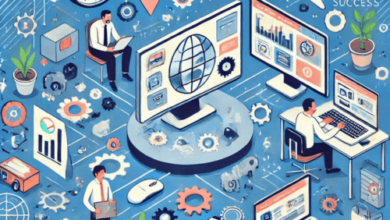
Virtual Reality and Augmented Reality Software Applications
Virtual Reality (VR) and Augmented Reality (AR) technologies have transformed the way we interact with digital content and the physical world. From gaming to education, these immersive technologies have found applications across various industries, offering unique and engaging experiences.
Understanding Virtual Reality and Augmented Reality
VR immerses users in a fully digital environment, while AR overlays digital elements onto the real world.
Gaming and Entertainment
VR gaming provides immersive experiences where players interact with virtual worlds, while AR enhances traditional gaming with real-world interactions.
Education and Training
VR and AR are used for simulation-based training, allowing learners to practice in realistic yet controlled environments.
Healthcare and Medical Training
VR offers medical students a platform to practice surgeries and medical procedures in a risk-free virtual space.
Architectural Visualization and Design
AR enables architects and designers to visualize and modify projects in real-world environments.
Tourism and Travel
AR enhances travel experiences by providing interactive information and context to historical sites and landmarks.
Retail and E-Commerce
AR enables customers to virtually try on products and visualize how they would look in their physical space.
Industrial Maintenance and Repairs
AR assists technicians by overlaying step-by-step instructions onto machinery for maintenance and repairs.
Psychological Therapy
VR is used in exposure therapy for treating phobias and anxiety disorders by creating controlled virtual scenarios.
Social Interaction
VR social platforms allow users to interact with friends and meet new people in virtual spaces.
Challenges and Opportunities
Technical challenges, user experience considerations, and ethical concerns are important aspects of VR and AR development.
Future of VR and AR
As technology advances, VR and AR applications will become more accessible, realistic, and integrated into everyday life.
In conclusion, VR and AR technologies have revolutionized various industries by offering immersive, interactive, and engaging experiences. From entertainment and education to healthcare and design, these technologies are reshaping the way we interact with both digital content and the physical world.


